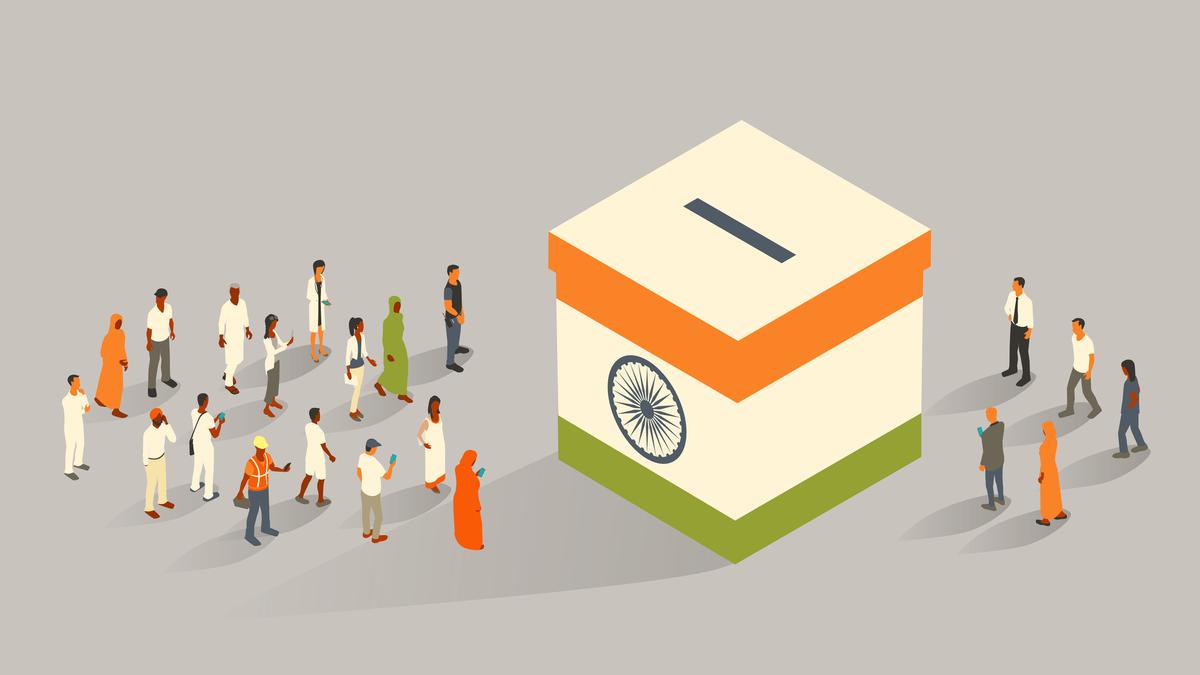- Courses
- GS Full Course 1 Year
- GS Full Course 2 Year
- GS Full Course 3 Year
- GS Full Course Till Selection
- Answer Alpha: Mains 2025 Mentorship
- MEP (Mains Enrichment Programme) Data, Facts
- Essay Target – 150+ Marks
- Online Program
- GS Recorded Course
- NCERT- First Ladder
- Polity
- Geography
- Economy
- Ancient, Medieval and Art & Culture AMAC
- Modern India, Post Independence & World History
- Environment
- Governance
- Science & Technology
- International Relations and Internal Security
- Disaster Management
- Ethics
- Current Affairs
- Indian Society and Social Issue
- CSAT
- 5 LAYERED ARJUNA Mentorship
- Public Administration Optional
- ABOUT US
- OUR TOPPERS
- TEST SERIES
- FREE STUDY MATERIAL
- VIDEOS
- CONTACT US
Interim Budget 2024-25:1 Lakh Crore Proposed for Boosting Sunrise Technologies
Interim Budget 2024-25:1 Lakh Crore Proposed for Boosting Sunrise Technologies
Context: The Finance Minister proposes to establish a corpus of Rupees One Lakh Crore to boost private investment in sunrise technologies.
- The announcement was made during the presentation of the Interim Budget 2024-25 in Parliament.
- The corpus will be established with a fifty-year interest-free loan, offering long-term financing or refinancing with low or nil interest rates.
- It will encourage the private sector to scale up research and innovation significantly in sunrise domains, combining the capabilities of youth and technology.
- India allocates only 0.7% of its GDP to R&D, a figure lower than countries such as South Korea and Israel.
- Additionally, this increase in spending aims to facilitate the provision of affordable, high-quality services for everyone.
- Smt. Nirmala Sitharaman, the Union Minister for Finance & Corporate Affairs, stated that this initiative aims to mark a golden era for the tech-savvy.
- In addition to this, a new scheme is proposed to strengthen deep-tech technologies in defense and expediting 'atmanirbharta' (self-reliance).
What are sunrise technologies?
1. "Sunrise technologies" typically refer to emerging and cutting-edge technologies that are on the rise, and can be very useful in the future.
2. These technologies have the potential for significant positive impacts on various industries and sections of society.
3. Examples include artificial intelligence, quantum computing, robotics, blockchain technology, etc.
Opportunities of Sunrise Technologies
1. Health:
a. Telemedicine: Sunrise technologies can augment remote healthcare services, allowing patients to consult with doctors from anywhere at any time.
For ex. Video consultations and health monitoring apps.
b. Personalized Medicine: It enables personalized treatment plans based on individual genetic information, improving the effectiveness of medical interventions.
2. Education:
a. Online Learning Platforms: It facilitates interactive and personalized learning experiences through platforms like e-learning modules and virtual classrooms.
b. Augmented Reality (AR): AR applications can enhance traditional teaching methods by providing an immersive and engaging educational experience.
3. Finance:
a. Blockchain in Banking: Sunrise technologies like blockchain provide secure and transparent financial transactions, reducing fraud and improving accountability.
b. Digital Ombudsmen: Offer financial guidance and assistance, enhancing accessibility and efficiency in investment strategies.
4. Manufacturing:
a. Smart Manufacturing: Sunrise technologies, including the Internet of Things (IoT) and automation, optimize manufacturing processes for increased efficiency.
For example, predictive maintenance using IoT sensors.
b. 3D Printing: Additive manufacturing technologies, such as 3D printing, enhance the production of customized and complex components.
5. Transportation:
a. Autonomous Vehicles: Sunrise technologies like artificial intelligence contribute to developing auto-driving vehicles, promising safer and more efficient transportation.
b. Smart Traffic Management: IoT-enabled systems and data analytics help in traffic control, reducing congestion and improving overall transportation efficiency.
6. Energy:
a. Renewable Energy Technologies: Sunrise technologies in this sector include solar and wind power innovations, contributing to sustainable and cleaner energy sources.
b. Smart Grids: Advanced grid technologies enable more efficient electricity distribution, including real-time data and automation for optimal energy management.
Major Steps Undertaken for Sunrise Technologies by Ministry of Electronics & Information Technology (MEITY)
1. India AI:
a. Implemented under the National Program on Artificial Intelligence (AI).
b. It aims to harness the potential of AI for inclusive growth, socio-economic development, and solving complex challenges.
2. Production Linked Incentive Schemes
a. The objective is to make domestic manufacturing globally competitive and to create global Champions in manufacturing.
b. Specifically designed to boost domestic manufacturing in sunrise and strategic sectors, curb cheaper imports and reduce import bills, improve the cost competitiveness of domestically manufactured goods, and enhance domestic capacity and exports.
3. National Blockchain Strategy (2021):
a. An initiative to explore and leverage the benefits of blockchain technology across various sectors.
b. It focuses on promoting efficiency, transparency, and security in financial transactions and other applications.
4. Centre of Excellence on Internet of Things and Blockchain Technology:
a. Establishment of a Center of Excellence (CoE) dedicated to fostering research, development, and innovation in the Internet of Things (IoT) and Blockchain technology.
b. Aim to accelerate the adoption of these technologies in diverse domains, promoting India's leadership in the global tech landscape.
Conclusion: Prime Minister Modi's vision of "Jai Jawan Jai Kisan Jai Vigyan and Jai Anusandhan" shines in the Interim Budget 2024-25. The Finance Minister aims to boost private investment in cutting-edge technologies with a proposed One Lakh Crore fund. This move aims to address India's lower spending on research and innovation, marking a golden era for the tech-savvy population.



